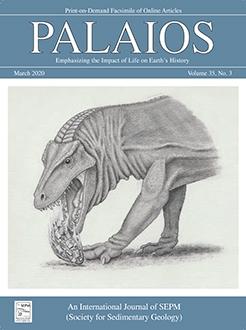Cold methane seeps were common in the Late Cretaceous Western Interior Seaway of North America. They provided a habitat for a diverse array of fauna including ammonites. Recent research has demonstrated that ammonites lived at these sites. However, it is still unknown if they hatched at the seeps or only arrived there later in ontogeny. To answer this question, we documented the abundance and size distribution of small specimens of Baculites and Hoploscaphites at eight seep sites in the Pierre Shale of South Dakota. The specimens of Hoploscaphites range from 0.8 to 8.1 mm in shell diameter, with most of them falling between 1 and 1.5 mm. The specimens of Baculites range from 0.7 to 19.2 mm in length, with most specimens falling between 6 and 8 mm. The small size and morphology of these specimens indicate that they are neanoconchs, that is, newly hatched individuals that lived for a short time after hatching. We also analyzed the isotope composition (δ13C and δ18O) of 12 small specimens of Baculites and one specimen of Hoploscaphites with excellent shell preservation from one seep deposit. The values of δ13C and δ18O range from -16.3 to -2.5‰ and -3.0 to -0.9‰, respectively. The values of δ 18O translate into temperatures of 19–28°C, which are comparable to previous estimates of the temperatures of the Western Interior Seaway. The low values of δ13C suggest that the tiny animals incorporated carbon derived from anaerobic oxidation of 12C-enriched methane into their shells. Evidently, they must have lived in close proximity to seep fluids emerging at the sediment-water interface and the associated microbial food web. However, this may have contributed to their demise if they were exposed to elevated concentrations of H2S derived from the anaerobic oxidation of methane.
How to translate text using browser tools
30 March 2020
LATE CRETACEOUS METHANE SEEPS AS HABITATS FOR NEWLY HATCHED AMMONITES
Alison J. Rowe,
Neil H. Landman,
J. Kirk Cochran,
James D. Witts,
Matthew P. Garb
ACCESS THE FULL ARTICLE
It is not available for individual sale.
This article is only available to subscribers.
It is not available for individual sale.
It is not available for individual sale.
<
Previous Article
|

PALAIOS
Vol. 35 • No. 3
March 2020
Vol. 35 • No. 3
March 2020




